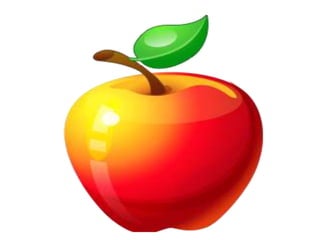1 of 12
Download to read offline












Ad
Recommended
Art1
Art1jansonke
╠²
This document lists 10 artists and their works and discusses various elements of visual art like line, movement, color, space, texture, shape, and pattern. It touches on musical tempo and instrumentation as well as articulation and dynamics as part of a vocabulary that covers both music and visual art.Music Museum Present(2)
Music Museum Present(2)jansonke
╠²
The interactive music museum aims to educate visitors about music history through interactive exhibits that bring music to life. Visitors can participate in mock radio interviews and music videos, try musical instruments, and view artifacts from famous musicians. The museum also features informational kiosks where visitors can learn about musicians, genres, and the evolution of music through games and multimedia. The goal is to inspire visitors' creativity and give them a feel for what it's like to be a rock star through immersive experiences.Interactivity in Museums
Interactivity in Museumslilibellamy
╠²
This document discusses interactivity in museums through digital engagement and interactive installations. It describes how museums use their online presence to provide pre-visit and post-visit experiences for visitors. Examples are given of interactive installations that use technologies like Arduino, Kinect, and processing to create immersive experiences. The document also outlines three hands-on activities for groups to design an interactive museum prototype or create content for a museum website.Presentation
Presentationlilibellamy
╠²
The document presents a final project proposal to create a device that would allow blind and visually impaired people to have an improved museum experience. The proposal was inspired by tactile paintings in other museums that provide touch impressions of artwork. The proposed device would use a glove with bend sensors that provides tactile feedback when touching a tablet, aiming to give users a relief impression of artwork. The proposal includes plans for user research, prototyping including low, medium, and high fidelity prototypes, and a timeline.This land is your land
This land is your landjansonke
╠²
The song celebrates the natural beauty and resources of America from California to New York and proclaims that the land belongs to all people. As the author traveled across America, they saw the vast skies, golden valleys, and heard a voice reminding them that the land was made for everyone to share. The repeating refrain emphasizes that the entire country, from coast to coast, was created for all people to enjoy together.3rd09 Tisket
3rd09 Tisketjansonke
╠²
1) The document summarizes the lyrics to the jazz song "A Tisket A Tasket" performed by Ella Fitzgerald.
2) The song tells a story about a girl who drops her yellow basket on her way to deliver a letter to her mother.
3) A little girl finds the dropped basket and takes it, causing the singer to worry that she has lost her basket for good if it's not returned.Starspangledbanner Shirley
Starspangledbanner Shirleyjansonke
╠²
This poem describes Francis Scott Key witnessing the American flag still waving over Fort McHenry after a night of bombardment during the Battle of Baltimore in the War of 1812. Key saw the American flag, with its broad stripes and bright stars, gallantly flying over the fort during the predawn hours despite the "rockets red glare" and "bombs bursting in air", proving that the fort had not fallen to the British overnight. The poem celebrates this sight which inspired the national anthem "The Star Spangled Banner".Starspangledbanner P
Starspangledbanner Pjansonke
╠²
This document summarizes the poem "The Star Spangled Banner" by Francis Scott Key, which describes his view of the American flag flying over Fort McHenry after the Battle of Baltimore during the War of 1812. Key wrote the poem after witnessing the bombardment of Fort McHenry by British ships, and seeing the American flag still waving at dawn despite the night of attack. The poem celebrates the resilience of the American flag and nation during a time of war.Starspangledbanner Kozel
Starspangledbanner Kozeljansonke
╠²
This poem describes Francis Scott Key witnessing the American flag still waving over Fort McHenry after a night of bombardment during the Battle of Baltimore in the War of 1812. Key saw the American flag, with its broad stripes and bright stars, gallantly flying over the fort during the predawn hours despite the "rockets red glare" and "bombs bursting in air", proving that the fort had survived the night-long attack. The poem celebrates this sight which inspired the national anthem "The Star Spangled Banner".Starspangledbanner Crook
Starspangledbanner Crookjansonke
╠²
This poem describes Francis Scott Key witnessing the American flag still waving over Fort McHenry after a night of bombardment during the Battle of Baltimore in the War of 1812. Key saw the American flag, with its broad stripes and bright stars, gallantly flying over the fort during the fighting as rockets and bombs exploded through the night, proving that the flag had survived the battle. The poem celebrates this sighting of the star spangled banner still waving over the fort as a symbol of American freedom and bravery.Starspangledbanner Stephan
Starspangledbanner Stephanjansonke
╠²
This document summarizes the poem "The Star Spangled Banner" by Francis Scott Key. The poem describes Key witnessing the Battle of Fort McHenry during the War of 1812 and seeing the American flag still waving at dawn after the night of bombardment, which inspired the song that became the national anthem of the United States. It recounts lines from the poem describing the sight of the American flag with its "broad stripes and bright stars" flying over the fort during the "perilous fight" and through the night as seen in the "rockets red glare" and "bombs bursting in air."The Music Time Capsule
The Music Time Capsulejansonke
╠²
The document outlines topics that a student will be exposed to in an exploration of music, including:
1) Gaining basic piano skills and investigating different music styles from the 1940s to 1990s.
2) Composing simple songs, learning to use an iPod/MP3 player, and basic singing skills.
3) Investigating music careers, taking virtual tours of musical locations, and learning historic dance moves.The Music Time Capsule(2)
The Music Time Capsule(2)jansonke
╠²
The document outlines topics that a student will be exposed to in an exploration of music, including:
1) Gaining basic piano skills and investigating different music styles from the 1940s to 1990s.
2) Composing simple songs, learning to use an iPod/MP3 player, and basic singing skills.
3) Investigating music careers, taking virtual tours of musical places, and learning historic dance moves.Rocknroll
Rocknrolljansonke
╠²
This document summarizes a homemade Rock 'n' Roll themed board game created by Clayton DeMooney. Players take on the role of four friends traveling across the US in a van to see their favorite band Guster in California. Players roll dice to move their van piece around the board, encountering benefits or setbacks. They can earn or lose money and attempt to win tickets to the concert through radio trivia questions or grand prize questions. The game provides instructions, templates, and content for playing.Purpose Of Creating Music
Purpose Of Creating Musicjansonke
╠²
People create music for ceremonial, recreational, and artistic reasons. Ceremonial music is used for rituals and celebrations, while patriotic music is used for worship. Recreationally, music is made for entertainment at games, social events, and as a hobby. Artistically, music expresses emotions and feelings, and is performed for audiences in concert settings.Music Mountain
Music Mountainjansonke
╠²
This document appears to be about music notation and scales. It contains musical notes and terms like "top", "bottom", "high", "low", "up", and "down". It also contains scales moving up and down between different musical notes and asks questions about the direction of certain note progressions. The document was developed by Martha Stanley and is intended for educational use only regarding music notation.Music Museum Present
Music Museum Presentjansonke
╠²
The interactive music museum aims to educate visitors about music history through interactive exhibits that allow visitors to experience what it's like to be a musician. Visitors can participate in mock radio interviews and music videos, try musical instruments, and view artifacts from famous musicians. The museum also features informational kiosks where visitors can learn about musicians and genres, listen to music, and take quizzes. The goal is for visitors of all ages to explore their creativity and learn about the lifestyles of musicians through hands-on experiences recreating performances and interactions with fans.Music Math
Music Mathjansonke
╠²
The document discusses the relationship between music and math. It explains that a whole note is equal to four counts, half notes are equal to two counts each, quarter notes are each worth one count, and eighth notes must come in pairs to equal one count. The repetition of "Let's go play now" at the beginning seems to indicate the document will use music as an example to demonstrate mathematical concepts related to note duration.Music Culture
Music Culturejansonke
╠²
The document discusses musical instruments and the cultures they represent. It asks which instrument is from Africa, Japan, and Scotland and provides multiple choice answers. It also lists aspects of American culture and asks what instruments can tell us about a culture, providing examples like raw materials, economy, technology, and government.Music Notation
Music Notationjansonke
╠²
Music notation was developed in the Middle Ages to help singers learn and perform Gregorian chants. A monk named Guido D'Arezzo invented the first system for writing down music in the 11th century. He introduced using lines and spaces to represent pitch and developed the use of clefs to assign pitches to specific lines. Over subsequent centuries, musicians continued refining the system, which led to the development of the modern musical staff that represents five lines and four spaces. Guido's system helped spread musical literacy and allowed for more complex music to be learned and performed.Music 102\\\\\\\\\\\\\\\\\\\\\\\\\\\\\\\\\\\\\\\\\\\\\\\\\\\\\\\\\\\\\\\\\\\\...
Music 102\\\\\\\\\\\\\\\\\\\\\\\\\\\\\\\\\\\\\\\\\\\\\\\\\\\\\\\\\\\\\\\\\\\\...jansonke
╠²
The document profiles many famous musicians from various genres and eras, including:
- Emmanuel Ax, an American pianist of Polish origin known for his interpretations of Chopin and Schumann.
- Victor Borge, an American pianist and humorist of Danish origin who pursued a career as a "keyboard comedian" in the US.
- Yo-Yo Ma, one of the most renowned cellists, active as a soloist and in chamber music with artists like Emmanuel Ax.Music 102\\\\\\\\\\\\\\\\\\\\\\\\\\\\\\\\\\\\\\\\\\\\\\\\\\\\\\\\\\\\\\\\\\\\...
Music 102\\\\\\\\\\\\\\\\\\\\\\\\\\\\\\\\\\\\\\\\\\\\\\\\\\\\\\\\\\\\\\\\\\\\...jansonke
╠²
The document profiles 20 renowned classical musicians from various countries and eras. It provides brief biographies on each musician, including when and where they were born, their primary instrument or specialty, key performances and achievements in their career, and musical styles or repertoire they are known for. The musicians represented are pianists, violinists, cellists, flautists, and conductors who have had international success and influence in the classical music world.Mod5
Mod5jansonke
╠²
This document provides an introduction to a music module that will analyze nine different audio clips based on elements of music, context, and emotions conveyed. Students are instructed to listen to each audio selection and answer questions about the instruments, mood, genre, and cultural influences perceived in the samples. The questions will analyze characteristics like primary instruments, uniqueness of sounds, origins of artists, and similarities to other music heard before.Mod5(2)
Mod5(2)jansonke
╠²
This document provides an introduction to an online music module that explores elements and context of music through analyzing 9 audio clips. Students are instructed to listen to each audio selection and answer questions about instruments, mood, genre, and cultural origins. The purpose is for students to consider what music is through applying their knowledge and experiences to describe different musical works.Jazz Gatsby
Jazz Gatsbyjansonke
╠²
The document provides background information on the Jazz Age in the United States in the 1920s. It discusses key aspects of the period including prohibition, popular music like jazz and musicians like Louis Armstrong, women's fashion and roles, and F. Scott Fitzgerald's novel The Great Gatsby which captured the era. The Roaring Twenties were a period of cultural and social change in the aftermath of World War 1.Jazz Gatsby(2)
Jazz Gatsby(2)jansonke
╠²
The document provides background information on the Jazz Age of the 1920s. It discusses key aspects of the period including prohibition, popular music like jazz and Louis Armstrong, women's fashion and roles, and F. Scott Fitzgerald's novel The Great Gatsby which captured the era. The Roaring Twenties were a period of cultural and social change in the United States.More Related Content
More from jansonke (20)
Starspangledbanner Shirley
Starspangledbanner Shirleyjansonke
╠²
This poem describes Francis Scott Key witnessing the American flag still waving over Fort McHenry after a night of bombardment during the Battle of Baltimore in the War of 1812. Key saw the American flag, with its broad stripes and bright stars, gallantly flying over the fort during the predawn hours despite the "rockets red glare" and "bombs bursting in air", proving that the fort had not fallen to the British overnight. The poem celebrates this sight which inspired the national anthem "The Star Spangled Banner".Starspangledbanner P
Starspangledbanner Pjansonke
╠²
This document summarizes the poem "The Star Spangled Banner" by Francis Scott Key, which describes his view of the American flag flying over Fort McHenry after the Battle of Baltimore during the War of 1812. Key wrote the poem after witnessing the bombardment of Fort McHenry by British ships, and seeing the American flag still waving at dawn despite the night of attack. The poem celebrates the resilience of the American flag and nation during a time of war.Starspangledbanner Kozel
Starspangledbanner Kozeljansonke
╠²
This poem describes Francis Scott Key witnessing the American flag still waving over Fort McHenry after a night of bombardment during the Battle of Baltimore in the War of 1812. Key saw the American flag, with its broad stripes and bright stars, gallantly flying over the fort during the predawn hours despite the "rockets red glare" and "bombs bursting in air", proving that the fort had survived the night-long attack. The poem celebrates this sight which inspired the national anthem "The Star Spangled Banner".Starspangledbanner Crook
Starspangledbanner Crookjansonke
╠²
This poem describes Francis Scott Key witnessing the American flag still waving over Fort McHenry after a night of bombardment during the Battle of Baltimore in the War of 1812. Key saw the American flag, with its broad stripes and bright stars, gallantly flying over the fort during the fighting as rockets and bombs exploded through the night, proving that the flag had survived the battle. The poem celebrates this sighting of the star spangled banner still waving over the fort as a symbol of American freedom and bravery.Starspangledbanner Stephan
Starspangledbanner Stephanjansonke
╠²
This document summarizes the poem "The Star Spangled Banner" by Francis Scott Key. The poem describes Key witnessing the Battle of Fort McHenry during the War of 1812 and seeing the American flag still waving at dawn after the night of bombardment, which inspired the song that became the national anthem of the United States. It recounts lines from the poem describing the sight of the American flag with its "broad stripes and bright stars" flying over the fort during the "perilous fight" and through the night as seen in the "rockets red glare" and "bombs bursting in air."The Music Time Capsule
The Music Time Capsulejansonke
╠²
The document outlines topics that a student will be exposed to in an exploration of music, including:
1) Gaining basic piano skills and investigating different music styles from the 1940s to 1990s.
2) Composing simple songs, learning to use an iPod/MP3 player, and basic singing skills.
3) Investigating music careers, taking virtual tours of musical locations, and learning historic dance moves.The Music Time Capsule(2)
The Music Time Capsule(2)jansonke
╠²
The document outlines topics that a student will be exposed to in an exploration of music, including:
1) Gaining basic piano skills and investigating different music styles from the 1940s to 1990s.
2) Composing simple songs, learning to use an iPod/MP3 player, and basic singing skills.
3) Investigating music careers, taking virtual tours of musical places, and learning historic dance moves.Rocknroll
Rocknrolljansonke
╠²
This document summarizes a homemade Rock 'n' Roll themed board game created by Clayton DeMooney. Players take on the role of four friends traveling across the US in a van to see their favorite band Guster in California. Players roll dice to move their van piece around the board, encountering benefits or setbacks. They can earn or lose money and attempt to win tickets to the concert through radio trivia questions or grand prize questions. The game provides instructions, templates, and content for playing.Purpose Of Creating Music
Purpose Of Creating Musicjansonke
╠²
People create music for ceremonial, recreational, and artistic reasons. Ceremonial music is used for rituals and celebrations, while patriotic music is used for worship. Recreationally, music is made for entertainment at games, social events, and as a hobby. Artistically, music expresses emotions and feelings, and is performed for audiences in concert settings.Music Mountain
Music Mountainjansonke
╠²
This document appears to be about music notation and scales. It contains musical notes and terms like "top", "bottom", "high", "low", "up", and "down". It also contains scales moving up and down between different musical notes and asks questions about the direction of certain note progressions. The document was developed by Martha Stanley and is intended for educational use only regarding music notation.Music Museum Present
Music Museum Presentjansonke
╠²
The interactive music museum aims to educate visitors about music history through interactive exhibits that allow visitors to experience what it's like to be a musician. Visitors can participate in mock radio interviews and music videos, try musical instruments, and view artifacts from famous musicians. The museum also features informational kiosks where visitors can learn about musicians and genres, listen to music, and take quizzes. The goal is for visitors of all ages to explore their creativity and learn about the lifestyles of musicians through hands-on experiences recreating performances and interactions with fans.Music Math
Music Mathjansonke
╠²
The document discusses the relationship between music and math. It explains that a whole note is equal to four counts, half notes are equal to two counts each, quarter notes are each worth one count, and eighth notes must come in pairs to equal one count. The repetition of "Let's go play now" at the beginning seems to indicate the document will use music as an example to demonstrate mathematical concepts related to note duration.Music Culture
Music Culturejansonke
╠²
The document discusses musical instruments and the cultures they represent. It asks which instrument is from Africa, Japan, and Scotland and provides multiple choice answers. It also lists aspects of American culture and asks what instruments can tell us about a culture, providing examples like raw materials, economy, technology, and government.Music Notation
Music Notationjansonke
╠²
Music notation was developed in the Middle Ages to help singers learn and perform Gregorian chants. A monk named Guido D'Arezzo invented the first system for writing down music in the 11th century. He introduced using lines and spaces to represent pitch and developed the use of clefs to assign pitches to specific lines. Over subsequent centuries, musicians continued refining the system, which led to the development of the modern musical staff that represents five lines and four spaces. Guido's system helped spread musical literacy and allowed for more complex music to be learned and performed.Music 102\\\\\\\\\\\\\\\\\\\\\\\\\\\\\\\\\\\\\\\\\\\\\\\\\\\\\\\\\\\\\\\\\\\\...
Music 102\\\\\\\\\\\\\\\\\\\\\\\\\\\\\\\\\\\\\\\\\\\\\\\\\\\\\\\\\\\\\\\\\\\\...jansonke
╠²
The document profiles many famous musicians from various genres and eras, including:
- Emmanuel Ax, an American pianist of Polish origin known for his interpretations of Chopin and Schumann.
- Victor Borge, an American pianist and humorist of Danish origin who pursued a career as a "keyboard comedian" in the US.
- Yo-Yo Ma, one of the most renowned cellists, active as a soloist and in chamber music with artists like Emmanuel Ax.Music 102\\\\\\\\\\\\\\\\\\\\\\\\\\\\\\\\\\\\\\\\\\\\\\\\\\\\\\\\\\\\\\\\\\\\...
Music 102\\\\\\\\\\\\\\\\\\\\\\\\\\\\\\\\\\\\\\\\\\\\\\\\\\\\\\\\\\\\\\\\\\\\...jansonke
╠²
The document profiles 20 renowned classical musicians from various countries and eras. It provides brief biographies on each musician, including when and where they were born, their primary instrument or specialty, key performances and achievements in their career, and musical styles or repertoire they are known for. The musicians represented are pianists, violinists, cellists, flautists, and conductors who have had international success and influence in the classical music world.Mod5
Mod5jansonke
╠²
This document provides an introduction to a music module that will analyze nine different audio clips based on elements of music, context, and emotions conveyed. Students are instructed to listen to each audio selection and answer questions about the instruments, mood, genre, and cultural influences perceived in the samples. The questions will analyze characteristics like primary instruments, uniqueness of sounds, origins of artists, and similarities to other music heard before.Mod5(2)
Mod5(2)jansonke
╠²
This document provides an introduction to an online music module that explores elements and context of music through analyzing 9 audio clips. Students are instructed to listen to each audio selection and answer questions about instruments, mood, genre, and cultural origins. The purpose is for students to consider what music is through applying their knowledge and experiences to describe different musical works.Jazz Gatsby
Jazz Gatsbyjansonke
╠²
The document provides background information on the Jazz Age in the United States in the 1920s. It discusses key aspects of the period including prohibition, popular music like jazz and musicians like Louis Armstrong, women's fashion and roles, and F. Scott Fitzgerald's novel The Great Gatsby which captured the era. The Roaring Twenties were a period of cultural and social change in the aftermath of World War 1.Jazz Gatsby(2)
Jazz Gatsby(2)jansonke
╠²
The document provides background information on the Jazz Age of the 1920s. It discusses key aspects of the period including prohibition, popular music like jazz and Louis Armstrong, women's fashion and roles, and F. Scott Fitzgerald's novel The Great Gatsby which captured the era. The Roaring Twenties were a period of cultural and social change in the United States.